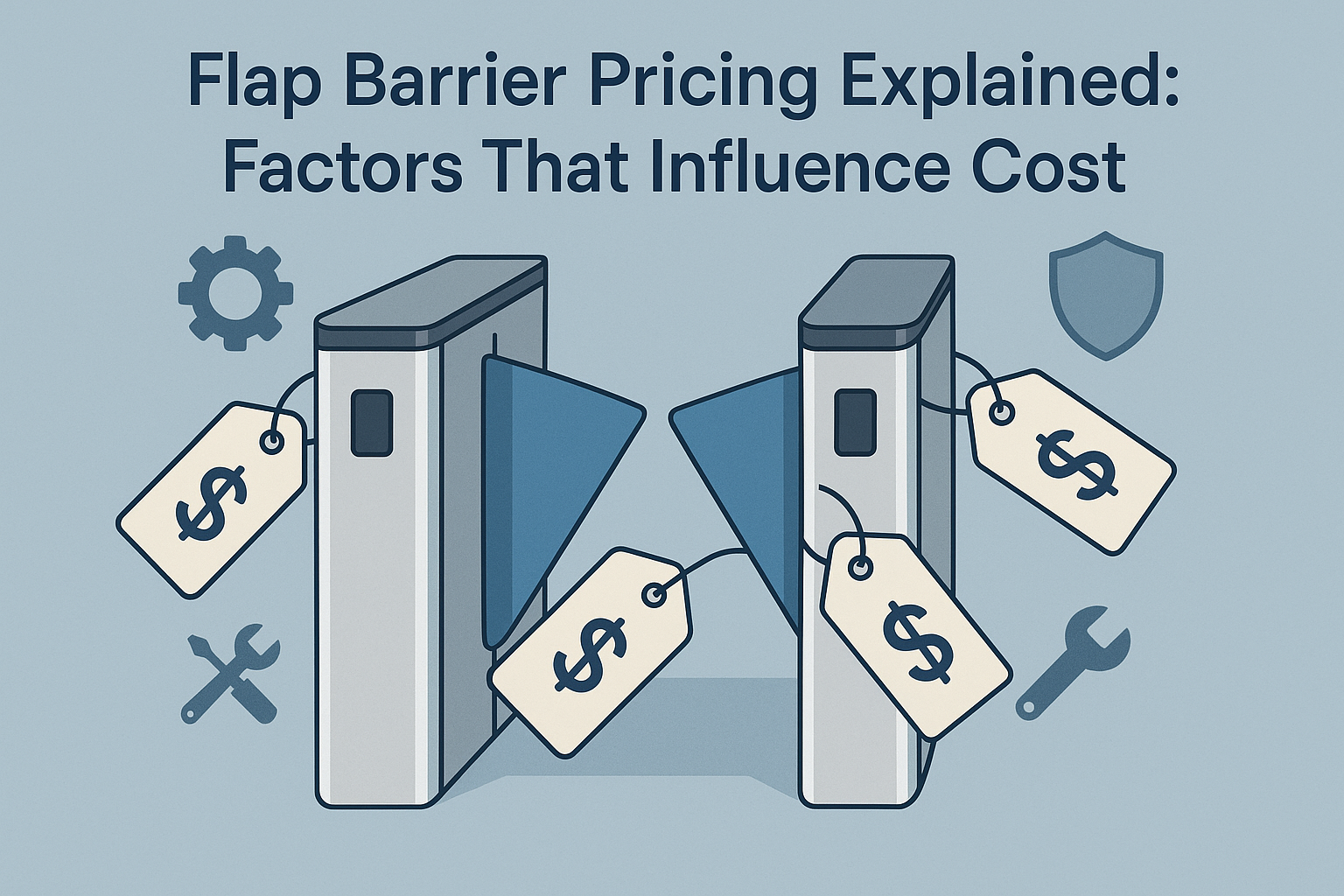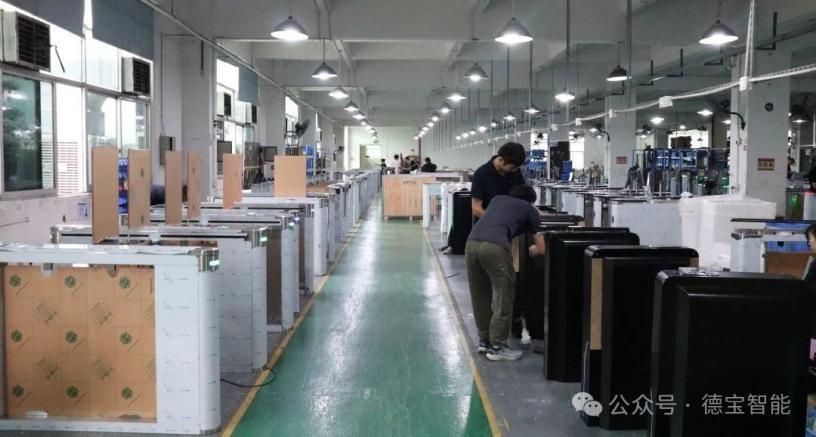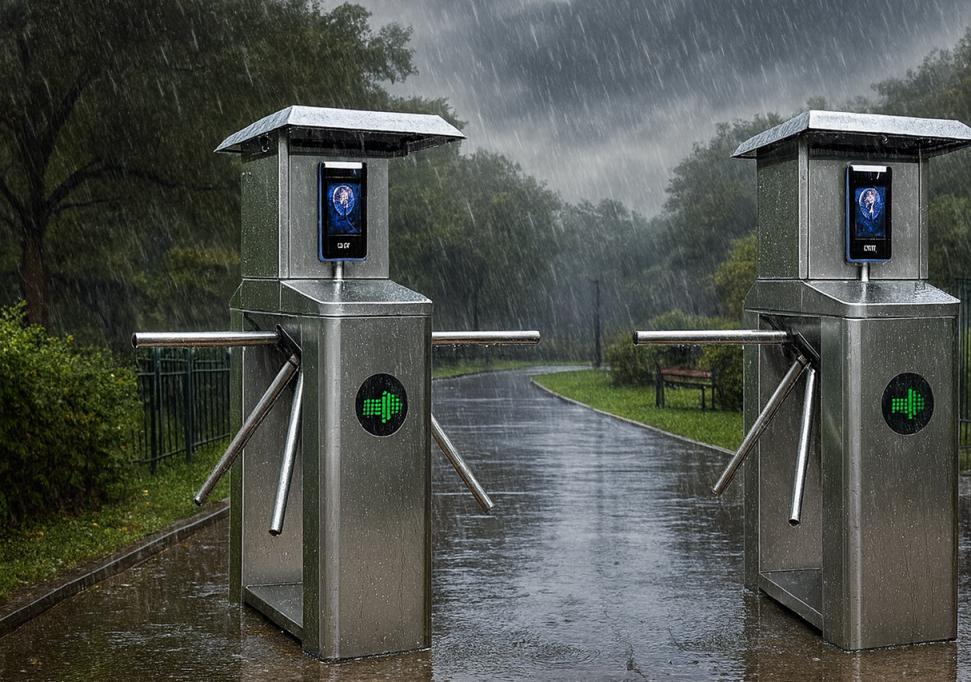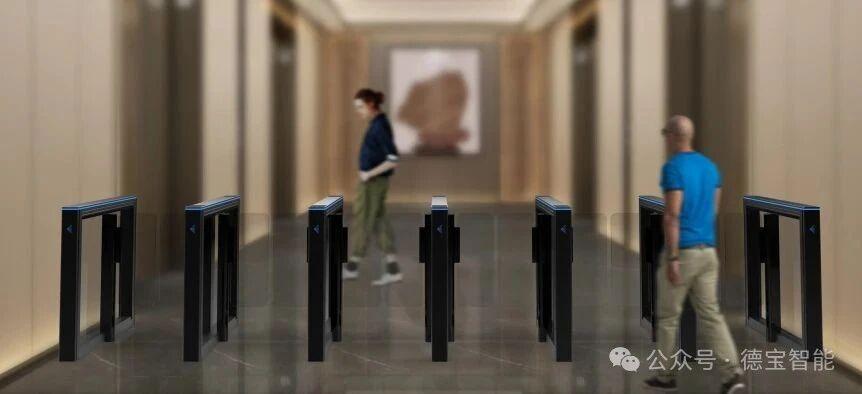Flap Barrier Pricing Explained: Factors That Influence Cost


Imagine being told you need a flap barrier for a new building or office. You go online, talk to a few vendors, and suddenly see a wide range of prices. One offers a basic system for a low cost. Another sends a quote that’s two or three times higher. You’re left wondering—what’s the right price?
This happens a lot. Flap barrier pricing is not easy to understand at first. The numbers vary because so many small details go into the final cost. If you only look at the price tag, you might miss key factors that affect how well the system works—or how long it lasts.
The truth is, a cheap unit now can lead to high repair bills later. On the other hand, a higher upfront cost might save time and money over the years. That’s why it helps to know what really drives pricing.
This guide explains the full picture. You’ll learn how materials, speed, features, and installation all affect the cost of flap barriers. You’ll also see how to compare prices the right way—so you don’t overpay or under-plan. If you want better value from your access control investment, keep reading.
Material Choices and Their Impact on Price
The outside of a flap barrier may look similar across brands. But what’s underneath matters a lot. The quality of the materials used in the housing and internal frame plays a major role in pricing. Stainless steel is a popular choice, especially for areas with high traffic or outdoor exposure. It resists rust, holds up under pressure, and keeps its shape over time.
Lower-cost barriers might use thinner steel, aluminum, or even plastic for internal parts. These materials cost less but also wear down faster. Thin casings dent easily. Internal frames may shift or loosen after a year or two of heavy use. That’s why systems built with strong, high-grade metals often carry a higher price—they’re built to last.
You should also look at the finish. Brushed steel, powder coating, and anti-fingerprint surfaces all add to the look and feel of the unit. They also protect it from wear and tear. These upgrades may raise the cost a little, but they also help the unit keep its clean, professional look over time.
Paying for better materials is usually worth it. A stronger unit means fewer repairs and less downtime. If your building sees hundreds or thousands of people a day, durability is not optional—it’s essential. And material strength is where that begins.
Speed and Mechanical Performance
Another factor that shapes flap barrier pricing is how fast the system operates—and how well it handles repeated use. In busy buildings, every second counts. A slow barrier can create lines, delays, or even safety concerns. That’s why high-speed operation is more than just a luxury.
Premium systems open and close faster, sometimes in less than a second. But speed alone isn’t enough. The motion must also be smooth and consistent. Cheap barriers might move fast, but with jerky or noisy movement. Over time, that leads to wear on the motor, sensors, or the flaps themselves.
The motor used in the unit affects both speed and lifespan. Better motors cost more. They run cooler, last longer, and keep working through thousands of open-close cycles. In contrast, weaker motors may overheat or burn out, especially during peak times.
Mechanical strength also impacts how well the system resets after a power failure or error. High-end units self-check and restart quickly. Others may need manual resets or tech support, adding to downtime.
So while fast, smooth performance may increase the upfront price, it often cuts long-term costs. For high-traffic sites, this feature is worth every penny.
Technology Features That Raise Cost
Modern flap barriers do more than just open and close. Many now include smart features that improve safety, prevent misuse, and integrate with other systems. Each of these features adds to the cost—but also adds value.
One big feature is anti-tailgating. This stops more than one person from entering at a time. It requires extra sensors and smarter control software. You’ll often find this in barriers made for secure areas like labs, banks, or data centers.
Other systems offer alarms, lights, or voice prompts. Some can tell the difference between valid and invalid entries. Some log every entry and send data to a central system. These features require better sensors and more advanced boards, which increase both the cost and the quality of the unit.
Some barriers also support user ID systems. They connect to fingerprint readers, facial scanners, QR codes, or mobile phones. These options give you flexibility—but also raise the price. More complex tech means more installation work, more power needs, and more parts that must be supported.
You don’t always need the most advanced features. But knowing what they cost—and why they matter—helps you choose what’s worth paying for.
Integration With Access Control Systems
Most buildings already have some kind of access control. That could be a badge reader, a security app, or a building management platform. If your flap barrier needs to connect with those tools, expect that to affect the price.
Simple integration with RFID badge readers is standard. But adding biometric readers, real-time alerts, or custom software takes more work. The vendor must make sure their system “talks” to your network without breaking security.
Integration costs also include setup. Tech teams need to configure software, test each entry point, and sometimes write new code. If your setup is complex—like linking multiple sites or using third-party credentials—this process can be time-consuming and expensive.
Even if the barrier itself is not expensive, adding full integration can push the total price much higher. But this is where smart planning helps. A good quote should explain integration costs clearly. If a vendor skips this, ask questions.
A clear understanding of integration helps you avoid surprise charges—and ensures your system works the way you need from day one.
Safety Sensors and Certifications
Every flap barrier must ensure safety first. That means it can’t injure someone who walks through it—whether by accident or on purpose. To meet that goal, good barriers include safety sensors that stop the flaps if a person or object is detected mid-path. These sensors are vital, and their quality directly affects flap barrier pricing.
Cheaper systems may use fewer sensors or lower-grade models. These can miss movement or respond too slowly. That raises the risk of injury, which could lead to liability issues. High-end systems use multi-zone sensors that watch every part of the passage and react instantly. That kind of safety doesn’t come cheap—but it’s often required in schools, hospitals, and corporate buildings.
You should also check for certifications. Some products meet global safety standards. Others follow country-specific rules. These standards are backed by independent testing and confirm that the barrier is safe and well-designed. Getting certified costs the manufacturer money, but it gives you peace of mind as a buyer.
Safety adds to price. But skipping it can cost more later—in injuries, downtime, or system replacements.
Installation and On-Site Setup
Even if you buy the best barrier on the market, it still needs to be installed properly. And that installation has its own cost. If your site is simple—flat flooring, easy wiring access—installation might be quick and affordable. But most sites have challenges that drive prices up.
The type of flooring matters. Thick tile or concrete may require extra tools or cutting. Limited space might force technicians to adjust layouts. If cables need to run under the floor or behind walls, that adds time and labor. Outdoor setups need extra sealing and weather protection. All of these increase cost.
You can estimate these expenses better using this installation cost reference. It breaks down common add-ons and helps avoid surprise charges.
Also factor in prep work—removing old systems, adding power lines, or coordinating with security teams. A clear install plan keeps delays low, but expect these items to add to the final quote. If you skip this part of the pricing picture, your budget may fall short.
Brand and Supplier Reputation
Reputation affects pricing in every industry—and flap barriers are no different. Well-known brands usually cost more. But there’s a reason for that. They’ve built their name by making reliable products and supporting them over time.
When you choose a strong brand, you often get better build quality, cleaner design, and clearer documentation. You also get more support. That means faster answers to questions, better training for your team, and quick replacement of parts. These services are built into the price.
Suppliers with a long track record also offer better project planning. They’ve done installs in offices, schools, banks, and factories. They know what can go wrong—and how to prevent it. That kind of experience is worth something.
If you go with a new or unknown brand, you might save money upfront. But support may be slower. Parts may not arrive quickly. And if the company disappears in a year or two, you’re stuck with an unsupported system.
It’s smart to check references, past projects, and reviews. You’ll learn if the higher price is justified. In many cases, it is.
Maintenance and Spare Parts
Buying the barrier is just step one. Keeping it running over time adds to the real cost of ownership. Some systems are built to make maintenance easy. Others seem cheap at first but need lots of service and part replacements.
Ask how often the barrier needs checks or cleaning. Ask which parts fail first and how much they cost to replace. If sensors or motors wear out fast, you’ll be paying more for repairs within the first year. That makes a “low-cost” system much more expensive over time.
Also ask how parts are delivered. If they ship from overseas or take weeks to arrive, every breakdown means a longer gap in your security. Strong suppliers stock parts locally. That makes repairs quick and cheaper.
The best vendors will offer service plans. These may cover regular inspections or small fixes. Paying a little extra for service now can save a lot on unexpected repairs later.
When you budget for your flap barrier, include at least two years of support and parts. That gives you a real picture of cost—and helps avoid last-minute surprises.
Warranty and Service Agreements
A product warranty is more than just fine print. It’s a sign of how much the company trusts its product. A short or limited warranty often means the system isn’t expected to last. A longer, full warranty means better parts, better testing, and better results.
Ask how long the warranty runs. One year is basic. Two to three years is better. Ask what’s covered—just parts, or parts and labor? What’s excluded? Will the company replace parts for free or charge shipping?
Also review the service agreement. Some vendors include free software updates or remote tech support. Others offer phone or video training for your team. These extras can save you time and frustration—and add real value to your purchase.
Some vendors offer extended support plans. These cover on-site service, weekend support, or 24/7 emergency help. For busy or secure sites, this level of service may be worth the cost.
In short, good warranties and service don’t just raise price—they protect your investment. That’s why they should be part of your price discussion from day one.
Comparing Different Models and Vendors
When you shop for flap barriers, it’s tempting to compare only the headline price. But that number doesn’t tell the full story. Two models might look alike but vary greatly in quality, features, and support. That’s why a full comparison matters.
Start by checking what’s included. Some vendors bundle readers, software, and wiring kits. Others sell the bare barrier and charge extra for every add-on. A cheaper quote might become more expensive after all extras are added.
Use this price comparison guide to see how features line up. It shows how to match specs across brands and models. That helps you compare apples to apples, not apples to unknown fruit.
Also compare delivery time, warranty, and installation plans. One vendor might install in two days. Another might take three weeks. If your project is time-sensitive, that gap matters.
Don’t forget to compare after-sale support. If one vendor includes a full year of remote tech help, that may justify a slightly higher price. Look at total value—not just the sticker.
Looking at Long-Term Ownership Costs
Flap barriers don’t stop costing money after the day they’re installed. Over time, they use power, need parts, and may need software updates or training. That’s why understanding the full ownership cost is key to smart planning.
Some barriers are more energy efficient than others. They use less power during idle times or open faster to reduce wear. These features save money each year.
Maintenance also matters. A barrier with common parts and clear guides is easier to fix. That lowers service bills. Others require special tools or tech visits, which add cost.
You should also consider training. Will your staff need help learning the software? Will security teams need support to connect the system to your access control?
Use this cost guide to explore ownership costs in detail. It shows how to plan not just for year one, but year five. That kind of thinking helps avoid budget shocks later.
The best value doesn’t come from the cheapest product. It comes from the system that costs the least over its full life.
Market Conditions That Affect Price
Flap barrier pricing isn’t set in stone. Like many tech and construction products, the cost can change based on outside factors. Knowing what affects price helps you buy at the right time.
Global demand plays a role. If many cities or buildings upgrade at once, suppliers may raise prices. If fewer projects are active, prices may drop. Supply chain problems—like metal shortages or shipping delays—also push costs up.
Labor cost is another factor. In some areas, skilled installers charge more. That raises the full price even if the product stays the same.
You can track some of these changes with a market report. These reports show pricing trends, demand forecasts, and supplier insights. If you see that prices are rising fast, it may make sense to buy early.
Timing your project with the market in mind can save thousands. It also helps set realistic expectations when building your budget.
Planning With the Help of a Buying Guide
You don’t have to figure all this out alone. A good buying guide helps you ask the right questions and avoid common traps. It turns flap barrier pricing into a clear, step-by-step decision—not a guessing game.
Use the buying guide to review must-have features, compare vendors, and plan installation. It’s built for people who aren’t experts but still need to make smart calls.
With a guide, you won’t forget key costs like cabling or reader setup. You’ll remember to check the warranty, ask about spare parts, and consider how the system fits your building long-term.
Most of all, you’ll be ready to talk with vendors confidently. You’ll know what to ask and what matters most. That saves time—and protects your budget from surprise costs.
Smart buying starts with smart planning. A good guide helps you do both.
Quick Checklist: What Affects Flap Barrier Pricing
- Material quality (steel grade, finish, internal frame strength)
- Opening/closing speed and mechanical durability
- Technology features (anti-tailgating, alarms, logging)
- Access system integration complexity
- Safety sensors and product certifications
- Installation conditions and site prep needs
- Brand reputation and vendor reliability
- Spare part availability and maintenance needs
- Warranty length and service plan details
- Market conditions (raw materials, labor, shipping trends)
FAQs
Q1: Why do two similar-looking barriers have such different prices?
Even if they look alike, the internal parts, motor quality, and sensors may be very different. Those hidden details greatly affect price and performance.
Q2: Can I buy the cheapest model and upgrade later?
Some upgrades are possible, but many core features—like motor strength or build materials—can’t be changed. It’s better to buy right the first time.
Q3: Are installation costs usually included in quotes?
Not always. Many vendors quote hardware only. Be sure to ask what’s included and what costs extra.
Q4: Do I really need a warranty?
Yes. A warranty protects you from early failure. It also shows that the vendor stands behind their product.
Q5: How often do prices change?
Prices can change with market demand, shipping costs, and material prices. Ask vendors how long a quote is valid and if upcoming price shifts are expected.












